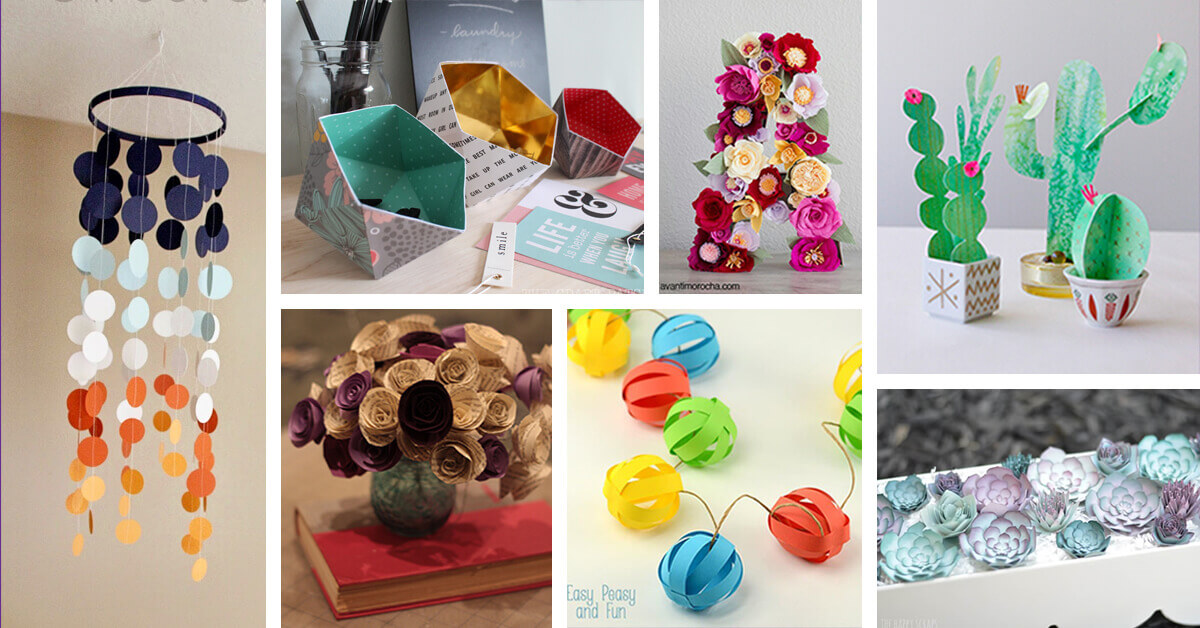Wall Hanging Craft Ideas Aesthetic: Dive into a world where yarn becomes art, twigs transform into treasures, and repurposed fabric finds its fashionable forever home! Forget those boring, beige walls – we’re about to unleash a tsunami of creative wall-hanging ideas, from bohemian bliss to minimalist marvels. Get ready to craft your own personal gallery wall, one stunning piece at a time.
Prepare for a seriously stylish crafting adventure!
This guide explores five distinct aesthetic styles – Bohemian, Minimalist, Scandinavian, Rustic, and Modern – each with its own unique color palettes, materials, and techniques. We’ll walk you through detailed tutorials for macrame, repurposed materials, and geometric wood-and-string designs. Discover the magic of incorporating natural elements like dried flowers and feathers, and learn how to create layered masterpieces with mixed media.
Finally, we’ll help you strategically place your creations to maximize their impact, transforming your home into a haven of handcrafted beauty.
Aesthetic Wall Hanging Styles
Wall hangings aren’t just décor; they’re personality statements, silent storytellers whispering tales of your style. From the breezy bohemian vibe to the sleek minimalism, the right wall hanging can transform a space. Let’s dive into five distinct aesthetic styles, exploring their unique characteristics, color palettes, and material choices.
Bohemian Wall Hanging Style
Bohemian style is all about embracing free-spiritedness and eclecticism. Think flowing fabrics, rich textures, and a vibrant color palette. Imagine earthy tones like terracotta and ochre blending seamlessly with jewel tones like sapphire and emerald. Materials often include macrame cord, tapestry, feathers, and beads. A typical Bohemian wall hanging might feature a mix of these elements, creating a layered and visually interesting piece.
Minimalist Wall Hanging Style
Minimalist wall hangings prioritize simplicity and clean lines. Neutral color palettes, such as off-white, beige, and gray, dominate. Materials are often limited to natural fibers like linen or cotton, or perhaps sleek metal. The focus is on creating a sense of calm and uncluttered space. A minimalist wall hanging might be a single, geometric shape in a muted color.
Scandinavian Wall Hanging Style
Scandinavian design emphasizes functionality and natural light. Wall hangings in this style often feature muted colors like whites, grays, and soft blues. Natural materials such as wood, wool, and cotton are preferred. Simple geometric patterns or minimalist designs are common. A typical Scandinavian wall hanging might be a simple woven piece in a natural fiber, possibly with a subtle pattern.
Rustic Wall Hanging Style
Rustic wall hangings evoke a sense of warmth and nostalgia. Think natural textures, earthy tones, and handcrafted elements. Colors often include browns, creams, and greens. Materials commonly used include wood, burlap, and possibly dried flowers or plants. A rustic wall hanging might be a piece of woven fabric with a distressed look or a wood-framed tapestry.
Obtain direct knowledge about the efficiency of craft ideas for toddler birthday party through case studies.
Modern Wall Hanging Style
Modern wall hangings are characterized by clean lines, bold colors, and geometric patterns. The color palette can be quite varied, from monochromatic schemes to vibrant pops of color. Materials might include metal, acrylic, or even repurposed materials. A modern wall hanging might feature a striking geometric design in bold colors, or perhaps a simple, abstract piece.
Wall Hanging Mockups
Let’s visualize these styles with three mockups:
- Bohemian: A large, circular macrame piece with varying textures, incorporating beige, terracotta, and navy blue cords. Feathers and small wooden beads are subtly woven in.
- Minimalist: A rectangular wall hanging made from a single piece of off-white linen, featuring a simple, embroidered geometric pattern in a muted gray.
- Scandinavian: A small, woven wall hanging made from natural wool yarn in shades of cream and light gray, with a simple, repeating pattern.
DIY Wall Hanging Craft Techniques
Creating your own wall hangings is a rewarding experience, allowing you to personalize your space and unleash your creativity. Here are three detailed tutorials to get you started.
Macrame Wall Hanging Tutorial
Macrame wall hangings are a popular choice, offering a blend of texture and visual interest. You’ll need macrame cord (various thicknesses for added texture), a wooden dowel or driftwood, scissors, and possibly beads or feathers for embellishment. Basic knots like the square knot and the larks head knot are fundamental. Detailed instructions for these knots can be found online.
The process involves creating a foundation using the larks head knot, then gradually building up the design using square knots and other techniques, eventually attaching it to the dowel.
Repurposed Materials Wall Hanging, Wall hanging craft ideas aesthetic
Transform old clothing or fabric scraps into unique wall art. Gather various fabrics in complementary colors and textures. Cut the fabrics into strips, and then braid, knot, or weave them together to create a textured panel. You can add embellishments like buttons, beads, or patches. The process involves planning your design, preparing the fabric strips, and then assembling them into your chosen technique, creating a visually interesting tapestry.
Geometric Wall Hanging Using Wood and String
Geometric wall hangings offer a modern and minimalist aesthetic. You will need small wooden dowels or sticks, strong string or twine, and glue or strong adhesive. A simple design might involve arranging the wooden pieces to create a geometric shape, then carefully stringing them together to create the desired pattern. A diagram would illustrate the process clearly. This is a great way to showcase precision and clean lines.
Incorporating Natural Elements: Wall Hanging Craft Ideas Aesthetic
Natural elements add a touch of organic beauty and texture to wall hangings. Dried flowers, wood, feathers, and shells are all excellent choices, each offering unique aesthetic qualities.
Using Dried Flowers and Plants
Pressing flowers and plants is a crucial first step. Once dried, they can be incorporated into macrame pieces, woven tapestries, or framed displays. Proper preservation techniques, such as using silica gel or a flower press, are essential to maintain their color and shape.
Incorporating Other Natural Materials
Wood can be used in various ways, from creating frames to forming the structural elements of a wall hanging. Feathers can add a light and airy touch, while shells can provide a coastal or bohemian feel. Preparation might involve cleaning and possibly sealing the materials to ensure durability.
Comparison of Natural Materials
Here’s a comparison table highlighting the durability and aesthetic qualities of various natural materials:
| Material | Durability | Aesthetic | Care Instructions |
|---|---|---|---|
| Dried Flowers | Moderate (prone to fading and fragility) | Delicate, romantic | Keep away from direct sunlight and moisture |
| Wood | High (durable and long-lasting) | Rustic, natural | May require occasional polishing or sealing |
| Feathers | Low (delicate and prone to damage) | Light, airy | Handle with care, avoid excessive moisture |
| Shells | High (durable and weather-resistant) | Coastal, organic | Clean gently with a soft brush |
Advanced Wall Hanging Design Concepts
Once you’ve mastered the basics, explore more complex techniques to create truly unique wall hangings.
Layered Wall Hangings
Layered wall hangings combine different textures and fabrics to create depth and visual interest. This might involve layering a macrame piece over a woven tapestry or incorporating different fabrics with varying weights and colors. The process involves carefully planning the layering to maximize visual impact.
Incorporating Lighting Elements
Adding fairy lights or LED strips can transform a wall hanging into a stunning focal point, especially in the evening. Carefully consider the placement of the lights and ensure they are securely fastened to avoid hazards. This adds a dynamic and enchanting element to the design.
Mixed Media Wall Hanging
Mixed media wall hangings offer endless possibilities for creativity. Combining painting, embroidery, weaving, and other techniques allows you to create truly unique and personalized pieces. A complex design might incorporate a painted canvas as a base, overlaid with embroidered details and woven elements. The step-by-step process would involve preparing the base, then adding each element in a planned sequence, ensuring that the textures and colors complement each other.
Display and Placement Ideas
The placement of your wall hanging significantly impacts its visual impact and the overall room aesthetic. Consider room size, existing décor, and the desired ambiance when choosing a location.
Wall Hanging Placement Strategies
In a large room, a larger, more elaborate wall hanging can serve as a statement piece. Smaller rooms might benefit from smaller, more delicate pieces to avoid overwhelming the space. Consider the existing color scheme and style of the room when selecting the placement.
Impact of Size and Shape
Larger wall hangings create a bolder statement, while smaller ones add subtle accents. The shape of the wall hanging also influences the overall aesthetic. Geometric shapes create a modern feel, while organic shapes add a more natural touch.
Incorporating Wall Hangings into Interior Design Styles
A rustic wall hanging complements a farmhouse-style room, while a minimalist piece enhances a modern space. Eclectic interiors can showcase a mix of styles, creating a vibrant and personalized aesthetic. The key is to select wall hangings that harmonize with the overall design theme, enhancing the room’s character.
So, there you have it! From the intricate knots of macrame to the rustic charm of repurposed wood, you’ve now unlocked a treasure trove of wall-hanging craft ideas. Remember, the most beautiful creations often come from unexpected places – so embrace your creativity, experiment with materials, and let your personality shine through in every stitch, knot, and carefully chosen element.
Your walls are waiting to be adorned with your unique artistic flair. Go forth and craft!
Top FAQs
Can I use artificial flowers in my wall hangings?
Absolutely! Artificial flowers offer a low-maintenance, long-lasting alternative to real ones, and come in a vast array of colors and styles.
How do I prevent my wall hanging from damaging the wall?
Use appropriate hanging hardware like picture hooks or adhesive strips designed for the weight of your hanging. Always test the adhesive on an inconspicuous area first.
Where can I source unique materials for my wall hangings?
Thrift stores, flea markets, craft supply stores, and even your own recycling bin are goldmines for unique materials! Get creative and repurpose!
How do I clean my wall hangings?
This depends on the materials used. Generally, gentle dusting or spot cleaning is best. For delicate items, consider professional cleaning.


